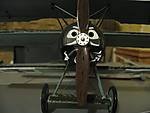By Daily Mail Reporter UPDATED:03:11 EST, 1 March 2011
Read More:
The worlds' oldest aircraft carrier which was a precursor to today's giant Navy vessels has been discovered - rusting by a river bank.
Looking like another just another rusting hull poking out of the water, for years the large dirt covered rusting wreck in the Thames was ignored. But a maritime journalist spotted the vessel was a 1918 Thorneycroft Seaplane Lighter.

(This is the Hamble found also and being used now for parts.)
Rubbish? The world's oldest aircraft carrier was found rusting on the River Thames covered in dirt.
Although at just 58 feet long it looks nothing like the modern HMS Ark Royal - which is more than ten times as long - the damaged vessel was the first of the kind.
The tiny craft, discarded in the river like a shopping trolley or piece of litter, would have seen action during the First World War as aircraft carriers were introduced for the first time.
Now it is being restored by experts at the Fleet Air Arm Museum in Somerset after being recovered from the water.
Originally it would have carried one plane that was launched by being towed into the wind - and then recovered after it was ditched into the sea on landing. Jon Jefferies, from the museum, said the small vessel was a significant find. 'It's only tiny but it's this ship that led to the development of the massive modern aircraft carriers,' he said.



























